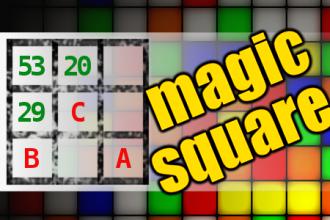MAGIC SQUARE: Calculate A*B-C
The aim is to place the some numbers from the list (20, 22, 26, 28, 29, 35, 51, 53, 60, 80) into the empty squares and squares marked with A, B an C. Sum of each row and column should be equal. All the numbers of the magic square must be different. Find values for A, B, and C. Solution is A*B-C.Correct answers: 0
#brainteasers #math #magicsquare


